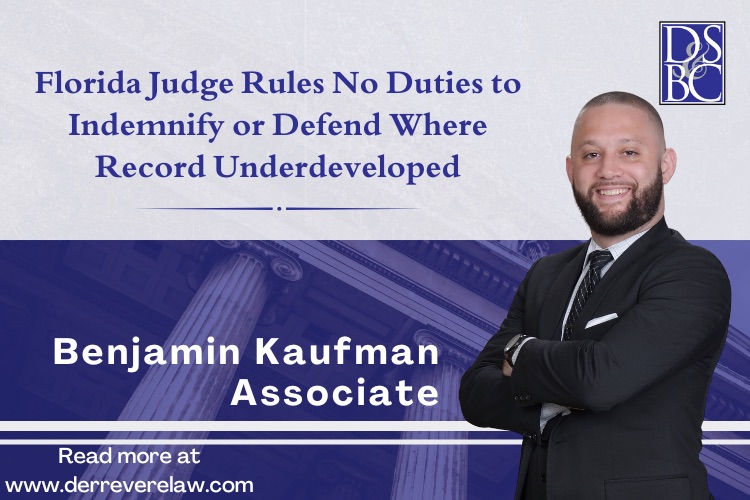Bryan Black Obtains Final Summary Judgment in Personal Injury Case involving claim against Architectural Company

December 7, 2016 – Smith v. Calvary, et al:
Counsel for Architect: Bryan W. Black.
This action arises out of personal injuries sustained by Plaintiff that occurred while Plaintiff was descending stairs in the center aisle of a theater on the Subject property.
Plaintiff sustained serious injuries to his legs which have led to multiple surgeries and extensive medical care. Plaintiff alleged that the Architect was negligent for failing to include handrails in its design of the center aisle in the theater.
At the time of Plaintiff’s fall, the design and construction of the property had been completed for more than four years, the Certificate of Occupancy had been issued and Owner had complete custody and control of the Property.
The Architect filed a motion for Summary Judgment based solely on the Slavin Doctrine. This doctrine stands for the position that liability is cutoff after the owner has accepted the work performed, if the alleged defect is “patent” which the owner could have discovered and remedied.
At the time of the hearing on Architect’s Motion, the only opposition asserted was from the Property Owner, who claimed the alleged dangerous condition asserted by Plaintiff was a “latent” defect. However, there was overwhelming evidence by way of correspondence to establish that the condition was open and obvious and Owner knew of and had previously discussed the stairs as a “safety concern”. These discussions included obtaining quotes for the installation of handrails, both before and after Plaintiff’s accident.
The Court granted Architect’s Motion holding (1) that Owner had standing to oppose Architect’s Motion and (2) that the alleged defect was patent and the Architect had no legal duty to Plaintiffs and cannot be found at fault or liable as a matter of law, citing Slavin v. Kay, 108 So. 2d 426 (Fla. 1979); Easterday v. Masiello, 518 So. 2d 260 (Fla. 1988).
After the entry of the Order Granting Summary Judgment, the Owner moved for Rehearing, which was denied.




